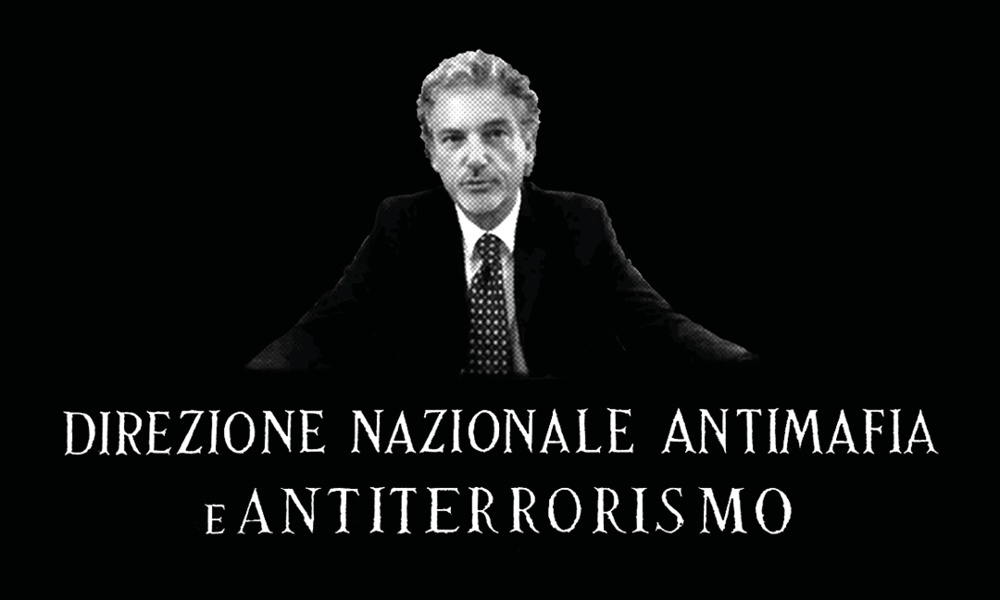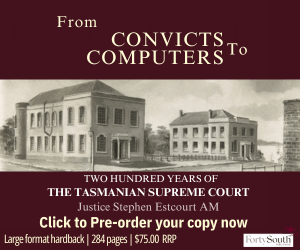When I was a boy growing up in Melbourne, my Italian grandmother used to recount an old saying about Naples, ‘See Naples and die’.
It was, of course, a figurative expression meaning a visitor to Naples would see the most sublime city that they were ever likely to see in their lifetime. However, in recent decades, it has taken on a more literal meaning for those who get caught up in the world of the Camorra, one of Italy’s oldest and most dangerous collection of mafia clans.1
Those clans have been reputedly involved in serious criminal activity and the corruption of public institutions with a propensity to protect their interests through violence, intimidation and a code of silence (omertà).2
The anti-mafia Magistrates have played a major role in successfully investigating and prosecuting the criminal activities of Camorra clans. They have done so in the face of significant resistance and at risk to their personal safety.
I recently interviewed Judge Cesare Sirignano (above), an experienced anti-mafia Magistrate, to draw on his knowledge in gaining reliable information from interviewees (he refers to as collaborators) during the course of his Camorra investigations.
Australian lawyers are unlikely to interview Camorra collaborators. However, they may be called upon to interview resistant interviewees (those reluctant or unwilling to provide information) in the course of investigations, such as during coercive examinations.
The purpose of this article is to show that Judge Sirignano’s ‘investigative’ approach has been effective in gaining reliable information from collaborators and can be effective for interviewing resistant interviewees. His ‘investigative’ approach is characterised by good preparation, building and maintaining trust, being respectful (although assertive where necessary), varying questioning techniques in a flexible manner, and keeping an open mind.
Judge Sirignano has had considerable experience investigating and prosecuting the Camorra. Between 1999 and 2015 he served as a Deputy Prosecutor of the Republic (of Italy) at the district anti-mafia office in Naples.
During that time he carried out numerous investigations into organised crime involving Camorra clans based in the provinces of Caserta and Naples. He coordinated the capture of fugitives from the formidable Casalesi clan,3 including the head of its military wing, Giuseppe Sentola, and the three hit men convicted of carrying out the Castel Volturno massacre in 2008.4
He has successfully prosecuted members and associates of the Casalesi clan for various serious crimes, including those involved in an agreement between the Sicilian Cosa Nostra and the Casalesi clan for a monopoly of road haulage to and from fruit and vegetable markets in southern-central Italy.
More recently, he has been appointed to various working groups on organised crime, transnational crime and the search for fugitives. Relevant to this article, he has also managed around 60 collaborators with justice (pentiti) at all levels of the Camorra, including prominent Casalesi clan bosses Giuseppe Sentola (referred to above) and Antonio Iovine (known as ‘o ninno’).5
At first sight, it would seem there is a strong incentive for collaborators to provide full information under the Italian system. The decision to collaborate with justice is a voluntarily one. Collaborators usually decide to do so after they have been arrested and charged with offences in the hope of receiving a reduction in their sentence (as it is not possible to receive an immunity from prosecution).
Once they have advised the authorities of their decision to collaborate, they, and those close to them, are immediately placed under protection. They are required to surrender all their assets and they have 180 days to tell the interviewing Magistrate everything about their criminal activities and what they know about the criminal group and its activities.
The Magistrate must then decide whether that information is useful, genuine and complete. If so, it triggers a protection plan.6 If not, they receive no protection plan, they will have self-accused themselves (without protection against self-incrimination) and other clan members are likely to be aware of their collaboration.
However, despite the obvious ‘all or nothing’ incentive for collaborators to provide full information, and the potentially dire consequences for not doing so, interviewing Camorra collaborators is not a straightforward matter.
There are powerful countervailing factors that need to be addressed by the interviewing Magistrate.
Firstly, collaborators usually mistrust the state and public officials. They are unlikely to have had contact with the public administration and any contact, such as with the police, was probably negative.
Secondly, they fear retaliation from their clan for betraying the code of silence (omertà). Finally, and this is also based on my own experience, co-operation is likely to challenge their own long-held values and those of their immediate community.
It is for these reasons that Judge Sirignano emphasised that the Magistrate is more than just a ‘notary’ eliciting and recording information. On the contrary, their role is a very active and strategic one.
He suggested that the Magistrate is the most important person in interviews because they must be fully prepared in order to maximise their potential. They must also build a relationship of trust with collaborators whilst, at the same time, maintain control over their interviews.
They must then sift through/interpret the resulting information so that it properly serves the purposes of the investigation. How then has Judge Sirignano dealt with these matters and managed to gain reliable information from collaborators?
Being prepared
Understanding collaborators and the organisation with which they are connected allows the Magistrate to better assess the plausibility and reliability of the information they provide.
For example, a lower level member is unlikely be in a position to know about the business interests of their clan. Oreste Spagnuolo, one of the Castel Volturno massacre ‘hit men’, could provide information about Casalesi clan killings, extortion and clan structure but not its business interests. Antonio Iovine, on the other hand, whilst also a killer, had long managed the clan and could provide information about the nature and extent of the clan’s business interests.
Prior to an interview, Judge Sirignano will review the information already gathered in an investigation (including that relating to the collaborator and their background). He will also request and review additional relevant information. For example, a listing of all the times the collaborator and others about whom they are likely to speak were in prison. That information gives him the necessary factual background to ‘lead the interview’rather than be led by the collaborator.
Regarding knowledge of the organisation, there are two types of Camorra organisation. The first (and most common) type consists of clans involved in drug trafficking, counterfeit cigarettes, loan sharking, extortion, weapons trafficking and related criminal activity.
They generally invest the proceeds of their crimes in businesses, but their primary goal is to control territory. The more territory they control the higher their profit, so violent clashes between clans over territory are common. Usually, this type of clan usually has no interaction with the public administration.
The second type is more sophisticated but also more insidious. The Casalesi clan typifies this type. In addition to involvement in the criminal activities referred to above, it also deals with (and corrupts) the public administration.
It is involved in the allocation of public contracts, including garbage collection and the clearance of polluted areas, and in more strategic businesses such as road haulage. This type of clan tends to operate in silence and via professional advisers. It is less overtly violent and only resorts to violence to establish and/or enforce control.
Building and maintaining trust
Judge Sirignano indicated that an effective interview is based on mutual respect between the Magistrate and the collaborator.
He emphasised the importance of building and maintaining a relationship of trust. He will reassure the collaborator, advise them of the advantages of collaborating and let them know that he is available for them (within the limits of the law).
He will also let them know that he is willing to use their information to achieve a result from the investigation. However, he will not promise anything he cannot deliver, he will not tell a collaborator what to say (or not say) and he will make it clear that he is unwilling to accept false or partial information.
But there is more to it than just building and maintaining personal trust. It is also about building trust in the State, where it is not unusual for there to be mistrust. The Magistrate’s job, the judge said, is to foster a more positive view of the State in the sense that it will provide protection (as collaborators will not provide information unless they accept that they and their families are safe) and it can provide for their reintegration into society.
Using a flexible approach to questioning
Judge Sirignano’s approach to questioning is ‘humane’ (polite and respectful), even when he “interviewed people who wanted to kill me”. However, his method of questioning varies depending on the collaborator, their role in the organisation and the type of information he is seeking.
When interviewing a collaborator who has dealt with clan investments and who is likely to be relatively clever and better educated, he uses more open questions. That approach enables him to assess whether the collaborator is willing to provide information without being prompted.
He observed that a collaborator of this kind is likely to appreciate that it is in their interests to provide new information. Although, he cautiously scrutinises it as there is an ever-present risk information is being proffered to hide something else or protect someone else.
He uses a different approach to interviewing a collaborator from a clan’s military wing. That approach is still humane, but more direct because he is usually seeking information about specific crimes. For example, in the case of a clan murder, he will want to know: When it happened? Who was involved? What weapon was used?
Whilst his approach is humane, and whilst he will give collaborators a chance (see below), Judge Sirignano’s approach is more assertive if he believes collaborators are providing false or partial information.
However, Judge Sirignano will verify the information before he challenges it. If collaborators then tell the truth, he will also want to know why they provided false or partial information in the first instance, as their motivation for doing so may later be relevant in court.
For example, when he interviewed Oreste Spagnuolo, one of the Castel Volturno massacre ‘hit men’, Spagnuolo identified other people who were involved in the massacre but denied he was involved.
Initially the judge believed him but, when later challenged, Spagnuolo admitted his involvement. When pressed for a reason why he lied, Spagnuolo responded that he didn’t initially admit his involvement because he was ashamed of killing innocent people.
Italian anti-mafia Magistrates go on to prosecute the matters they have investigated. The judge’s investigative questioning is wider than his curial questioning as the former concerns finding out what happened and the context/background to what happened whereas the latter focuses on the specific evidence necessary to prove an offence.
Keeping an open mind
Judge Sirignano emphasised the importance of acting without prejudice. “You have to give the interviewee a chance”, and that is the case “even when interviewing someone who has dissolved a little boy in acid”.
The Magistrate also has to be honest enough to question their existing information, even when they has already used it in a trial. That is, of course, where new information is verified and makes sense. A collaborator will only tell the Magistrate what they think they wants to hear if they perceive the Magistrate will only believe new information that confirms existing information.
Applying these principles to coercive interviews
Whilst Judge Sirignano’s observations relate to voluntary interviews, they apply equally to coercive interviews (coercive examinations).
Effective coercive interviews often have a strong voluntary component. There is a big difference, for example, between interviewees who do no more than answer the questions they are compelled to answer and those who go further and provide full information in response to those questions.
Unfortunately, in my experience, interviewing lawyers/investigators too readily default to an ‘adversarial’ approach in coercive interviews. That approach is variously characterised by taking a partisan position; using narrow questioning techniques in an inflexible manner; aloof detachment; resorting to being unnecessarily accusatory and confrontational (by word or attitude); and being prepared to condemn an interviewee as a liar based on little more than an untested case theory.
Interviews, whether voluntary or coercive, are often part of an accusatory process that commences with an investigation and concludes with a prosecution. However, the various stages of that process have distinct objectives that may require a different approach.
Conclusion
Judge Sirignano’s collaborators, like any resistant interviewees, co-operate because they recognise it is in their interests. However, a significant factor contributing to that recognition is the way they are treated and the way the questioned.
An investigative approach characterised by being prepared, building and maintaining trust, varying the questioning method according to the circumstances and keeping an open mind can be effective in gaining information from resistant interviewees, just as it has been for gaining information from Camorra collaborators.
Finally, I acknowledge the selfless courage of the Italian anti-mafia Magistrates. When I previously interviewed Judge Antonino Di Matteo, he told me that (in spite of the risk to their safety) the anti-mafia Magistrates do their job because they are defending those who trust in the law and who don’t have the means to defend themselves.7 That was certainly true of previous anti-mafia Magistrates such as Giovanni Falcone, Paolo Borsellino and others, who gave their lives in that defence, and it continues to be true of their successors.
Chris Bonnici is a Deputy Public Interest Monitor for Victoria who has previously conducted over 1300 counter-terrorism and organised crime coercive examinations as counsel assisting the Australian Criminal Intelligence Commission. He has been trained in the PEACE model of investigative interviewing in Australia and the United Kingdom to interview adviser level and has taught that model to the staff of a number of government agencies in Australia and Malta.
Footnotes
1 The Camorra is based in the southern Italian region of Campania. It is not a monolithic criminal organisation but rather comprises of a number of independent clans each controlling their own territory. Judge Sirignano advised me it currently consists of between 50 and 60 different clans.
2 See the now dated Tom Behan, The Camorra (Routledge, 1996). The Camorra has also been dramatised in Roberto Saviano’s Gomorrah (Pan Macmillan, 2007).
3 This clan is from Casal di Principe in the Campanian province of Caserta.
4 The Castel Volturno massacre was the 2008 murder of innocent members of the African migrant community in retaliation for Nigerian drug dealers selling drugs without Casalesi clan permission.
5 Iovine was a ruthless killer but also ran the Casalesi clan and its business interests. In 2008 he was convicted of murder and other crimes in absentia and sentenced to life imprisonment following the ‘Spartacus trial’ (Processo Spartacus). He was finally apprehended in 2010 after 15 years on the run and spent four years in prison, presumably in isolation under the harsh 41-bis of the Prison Administration Act (where mafia members are completely isolated from family and associates). He then decided to collaborate with justice and provided information to Judge Sirignano.
6 A protection plan can variously include protection, relocation and/or financial, employment and other assistance to help collaborators and their families reintegrate into society.
7 Chris Bonnici, ‘How do you Interview the Mafia? A conversation about investigative interviewing with an anti-mafia magistrate: Judge Antonino Di Matteo’ (2018) 40(4) Bulletin (Law Society of South Australia) 26.








Share this article